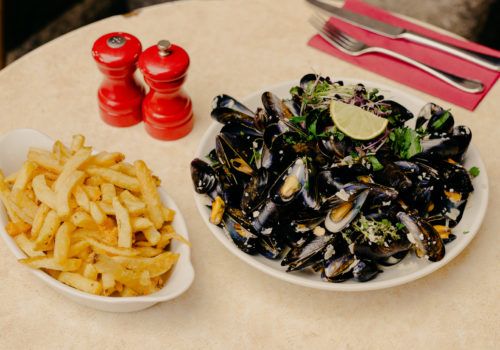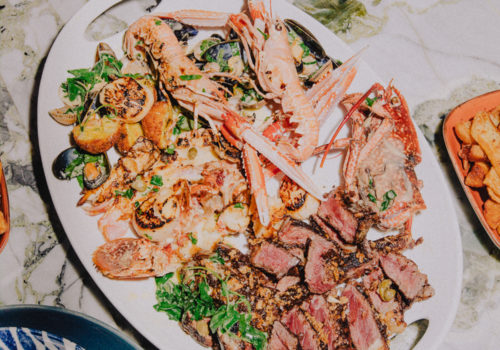Chef’s Selection: Volpe Nera
Words: Emily Mullen
Photography: George Voronov
In our new series Chef’s Selection, we ask chefs from fine-dining restaurants to select a couple of their favourite plates from their seasonal menus. These sometimes serious characters become giddy at the prospect of nerding out over these carefully curated dishes.
We discuss the concept, vision, and flavour development involved with these plates. Through this series, we hope to shed a bit of light on an area of cooking that sometimes gets lost in the clatter of plates. We want to get behind the scenes of these prestigious establishments, and if we learn a bit more about the people who created them along the way, all the better.
First up is Barry Sun, head chef at Volpe Nera, a restaurant that’s been held up as one of the guiding lights in this new era of suburban fine dining. Set deep inside the Southside, Volpe Nera’s location is as suburban an area as they come. A nicely sized restaurant, it’s painted a well-chosen grey, which is no doubt a nod to the name above the door, which translates from Italian as black fox
Once we jumped over some freshly poured concrete and into the entrance of Volpe Nera, we realised we were a bit early. Luckily, Sun’s wife was on hand to give us the inside track on the much-stabled chef before he arrived. She tells us that Barry can be a little bit quiet on first meeting but he is completely relaxed and at ease when he is in the kitchen. This ease is something that Sun has earned from spending time in some of the best kitchens in the city, namely Etto, Patrick Guilbaud and L’Ecrivain. But it was Mint where he started out as a porter, before learning the ropes and rising through the ranks.
What makes Volpe Nera different from all the other spots on Barry’s CV, is that it’s his own. It’s his first restaurant, with everything from the decor, the name and, of course, the menu, of his own creation. It’s an understated spot, without fuss or frills.
The upstairs holds a well-appointed room with natural light flooding through. For all this simplicity there are some little flashes of pizzazz like the champagne sword that rests on top of the jazzy little bar to the back. It’s easy to draw comparisons between chef’s and the restaurants they run but Sun is remarkably similar to his; unassuming, refined but with a wicked sense of humour when he gets going.

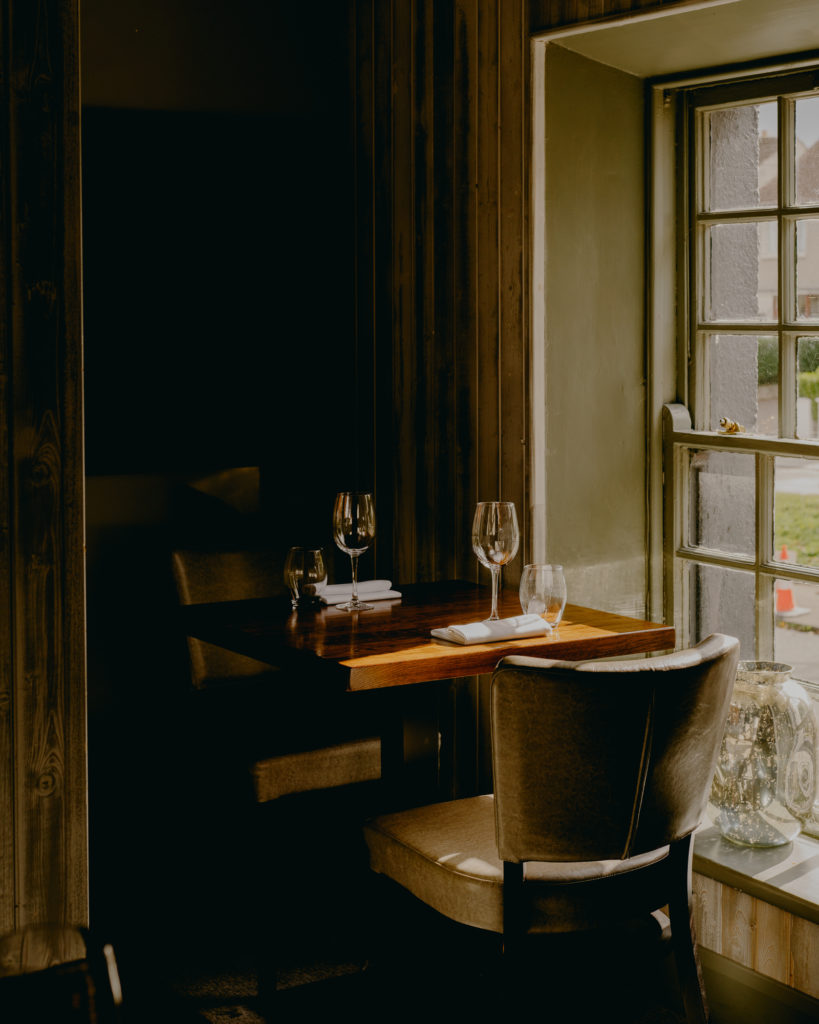
The food too is a direct reflection of the chef, intelligent, considered, and thoughtful. Once we get chatting to Sun, he opens up about food, telling us a little bit about his ethos around cooking. To him, “a customer is not coming here for the location, they are coming here because of the chef and for the chef’s palate.” To Sun, the palate is something that must be developed by the chef alone, “you can’t copy everybody, you need to have your own palate. You need to develop your own taste, that goes a long way” he told us. Sun has been on quite a journey with his own palate, growing up in China, a culture that favours salt and strong spices. Sun told us, “when I became a chef in Ireland I tried to make it delicate, I use very little soy sauce now, even at home we use more lemon than vinegar.” Sun found appreciation for some more delicate flavours during his time in Ireland, but his secret is that he still knows the power of a strong flavour and he isn’t afraid to wield it.
His background also gave him an appreciation for ingredients and taught him never to waste them, as demonstrated in some dishes chosen for this feature, the addition of oils made from throw-away things like carrot tops and blackberry leaves. His childhood living by the sea, eating seafood each and every day, also gave him an unflinching ability to work with seafood. Not with the reverence that is sometimes attached to ingredients like scallops or oysters, but an ability to work with flavours that challenge them, as opposed to the light touch that’s usually bestowed on them.
A customer is not coming here for the location, they are coming here because of the chef and for the chef’s palate
Barry Sun
The menu at Volpe Nera changes with the seasons, but Sun is constantly working on different dishes, continually adapting and working on the ideas that have sprung into his head. He admits that it can take him a bit of time to translate his ideas on to the plate, but it’s something that he constantly works at until they are perfected.
We asked Sun to pick a couple of dishes from his menu, and such was his enthusiasm he picked three brand new dishes, two savoury and one sweet that remind him of the “weather turning”. Each dish is seasonally driven, often taking overlooked or everyday ingredients and elevating them into the culinary stratosphere with his kitchen’s technique and skillset.
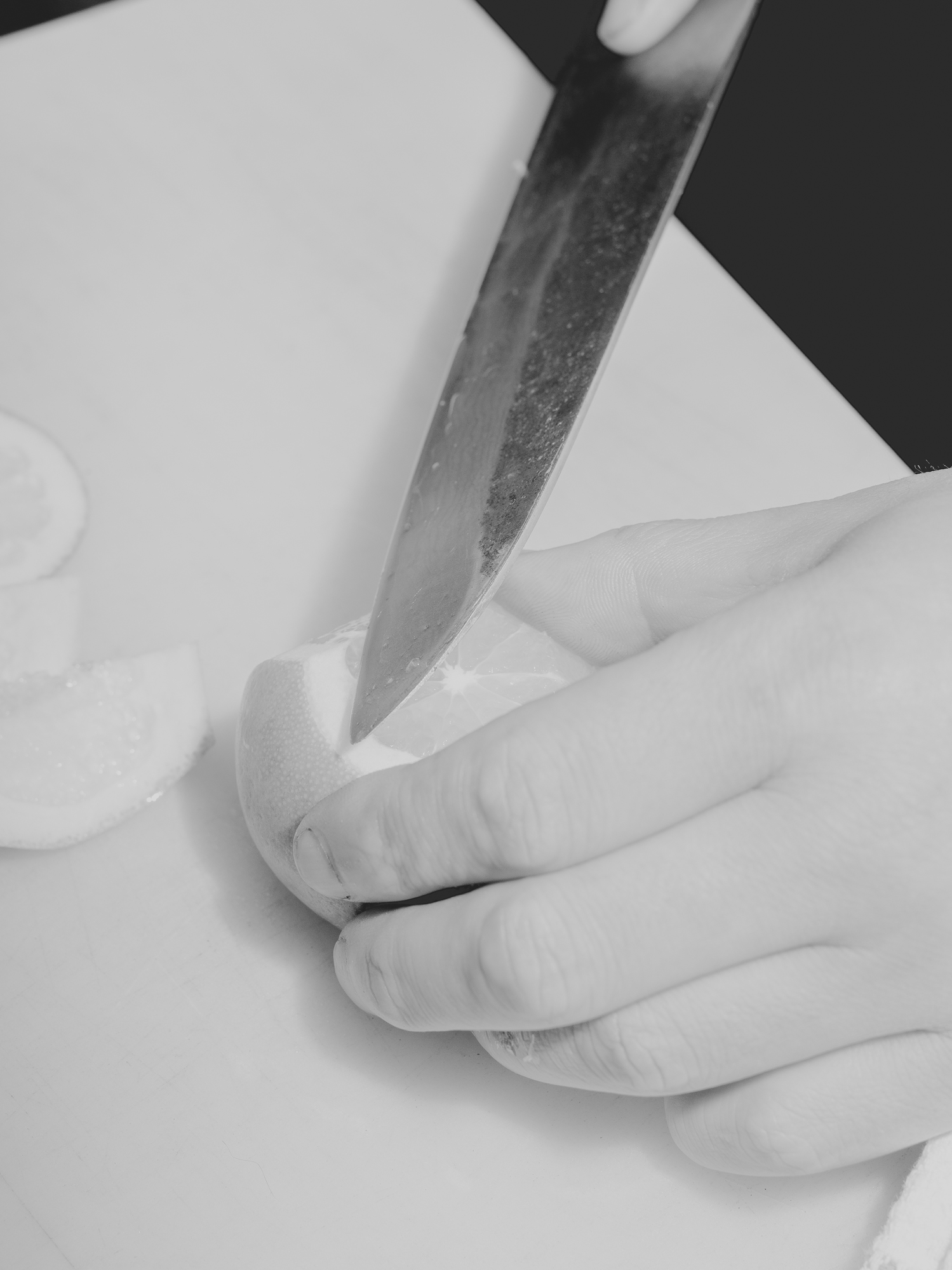
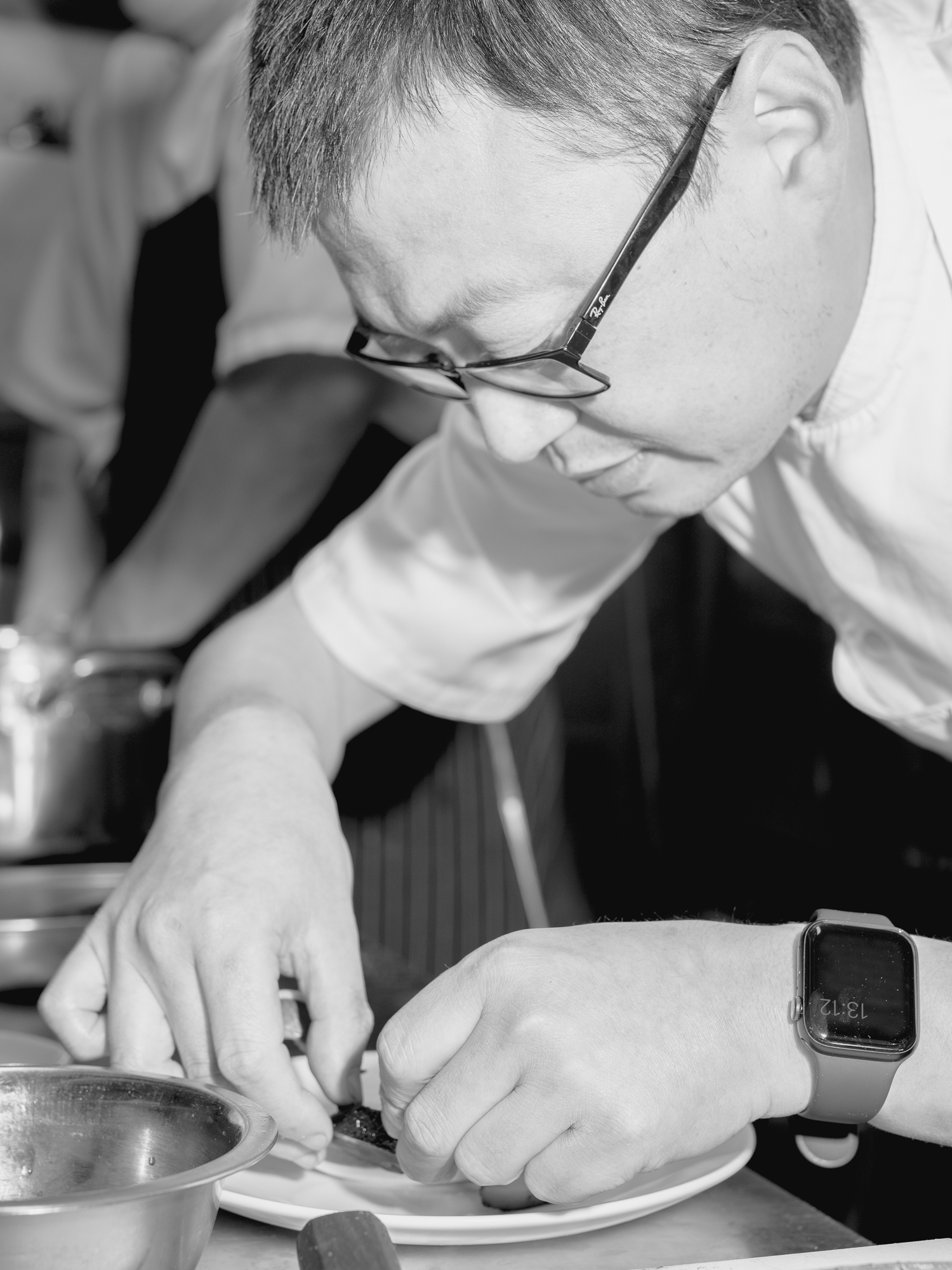
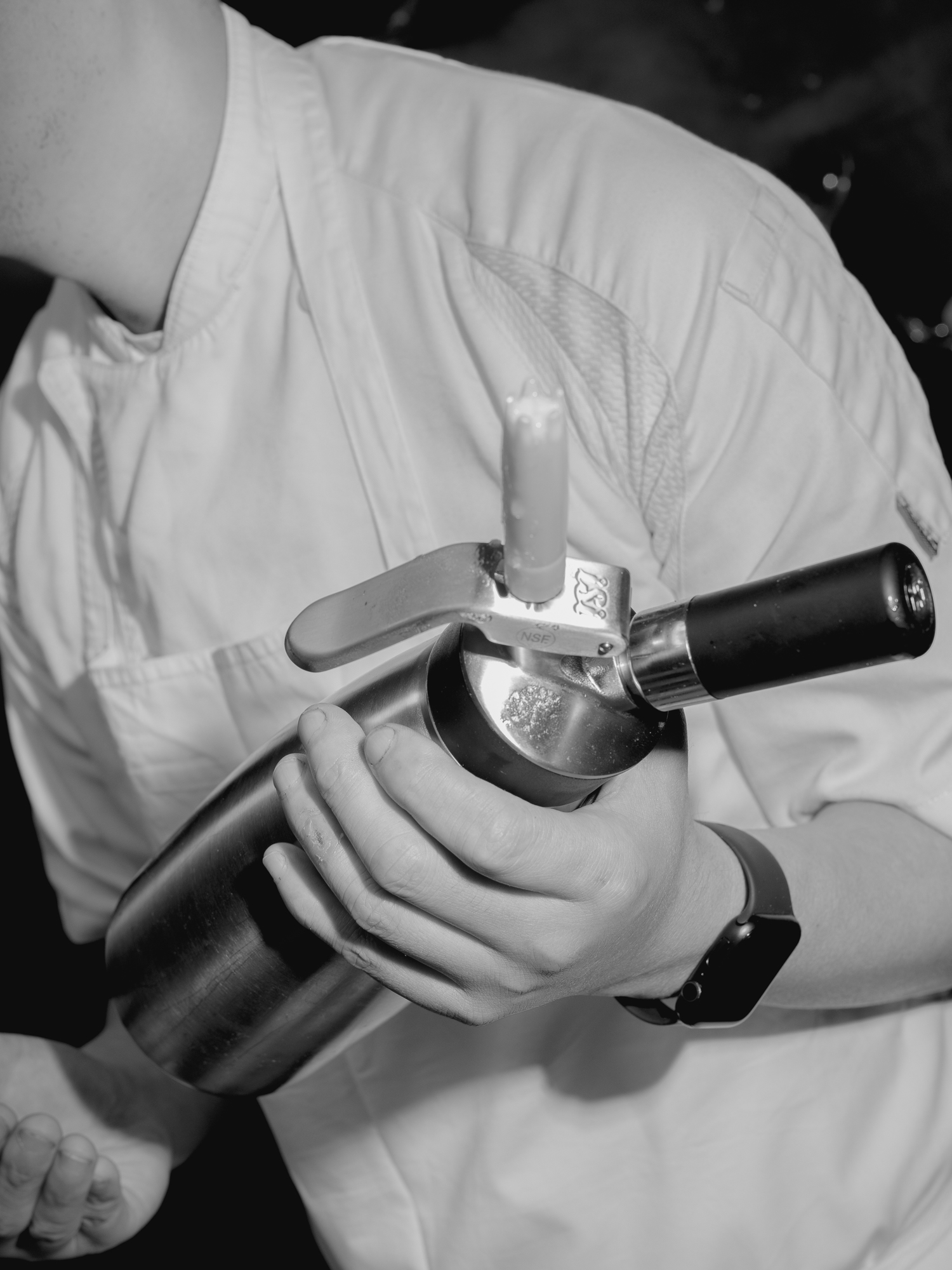
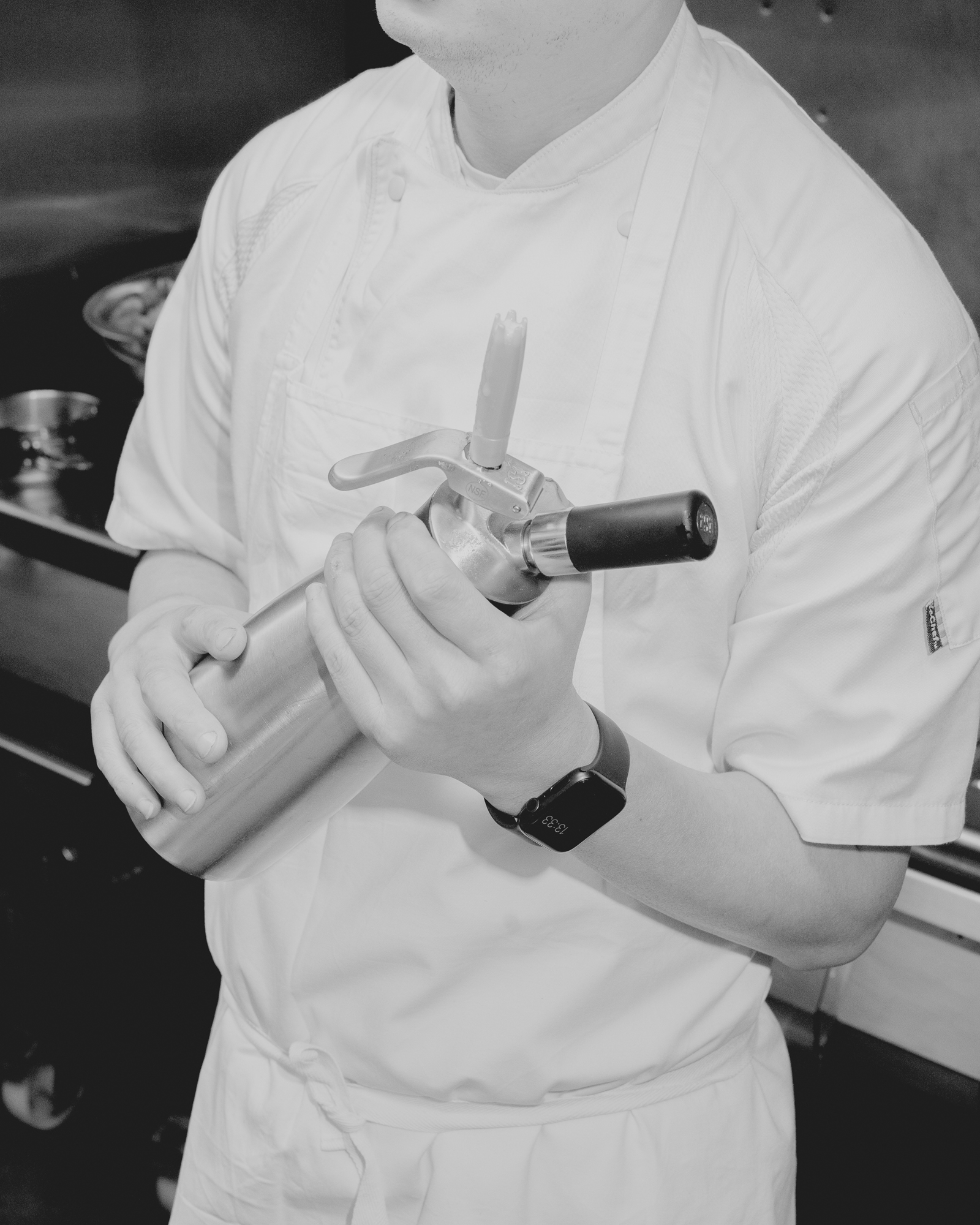
Duck Heart Tartine with Pickled Turnip
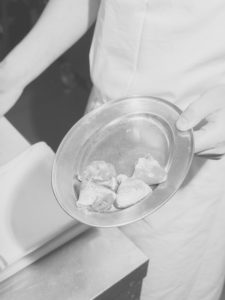
This dish takes a fair bit of preparation, beginning two weeks before the dish hits the table. Starting off when a big pile of prawns that are set aside for fermentation, the shells are then removed and made into a paste. The backbone of the dish, the sourdough, takes up to three days to maturate before being baked in-house into a loaf. While the small turnips take some time in a simple solution to pickle.
Once all this is preparation is done, the dish is a quick one to assemble. A pan is grabbed, a little duck fat melted, a slice of sourdough added and flipped when golden. The toast then becomes a tartine when the crusts are cut off and it’s topped with a generous layer of caramelized onions.
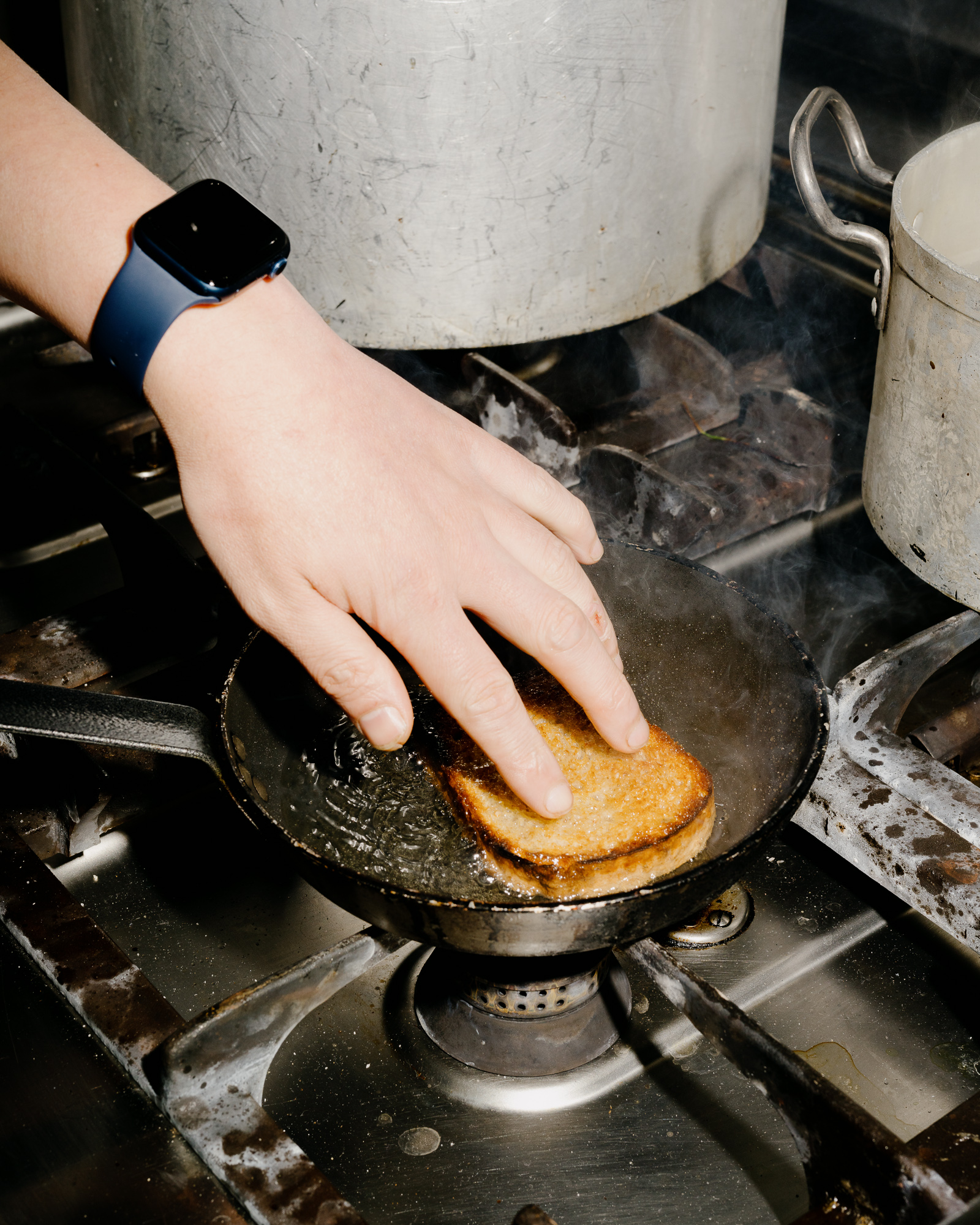
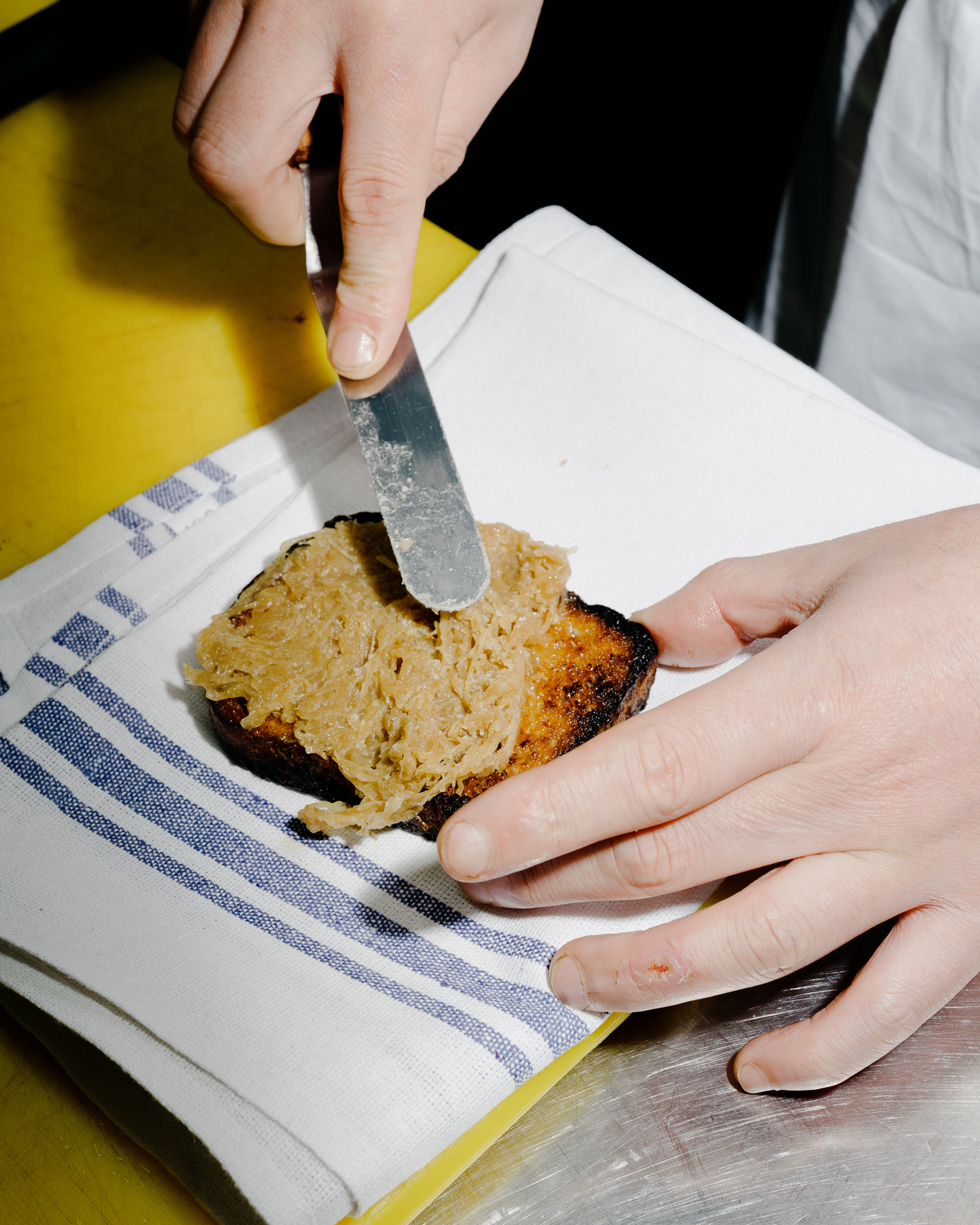
The pan doesn’t lie empty for too long, before the duck hearts are added, each side is given some heat before being removed for a short rest. Then the pan is dried, Balsamic vinegar is added and reduced, before the hearts are popped back in for a quick glaze. After they are removed from the pan, it’s time for carving, the hearts should ideally have a little pinkness to their centres. These halves are then arranged on top of the tartine alongside some finely sliced pieces of turnip. A drizzle of red wine and chicken jus is added on top, alongside a couple of dots of the fermented plum paste that is added to the plate. Decoration comes from micro herbs, namely borage, garden phlox and sorrel.
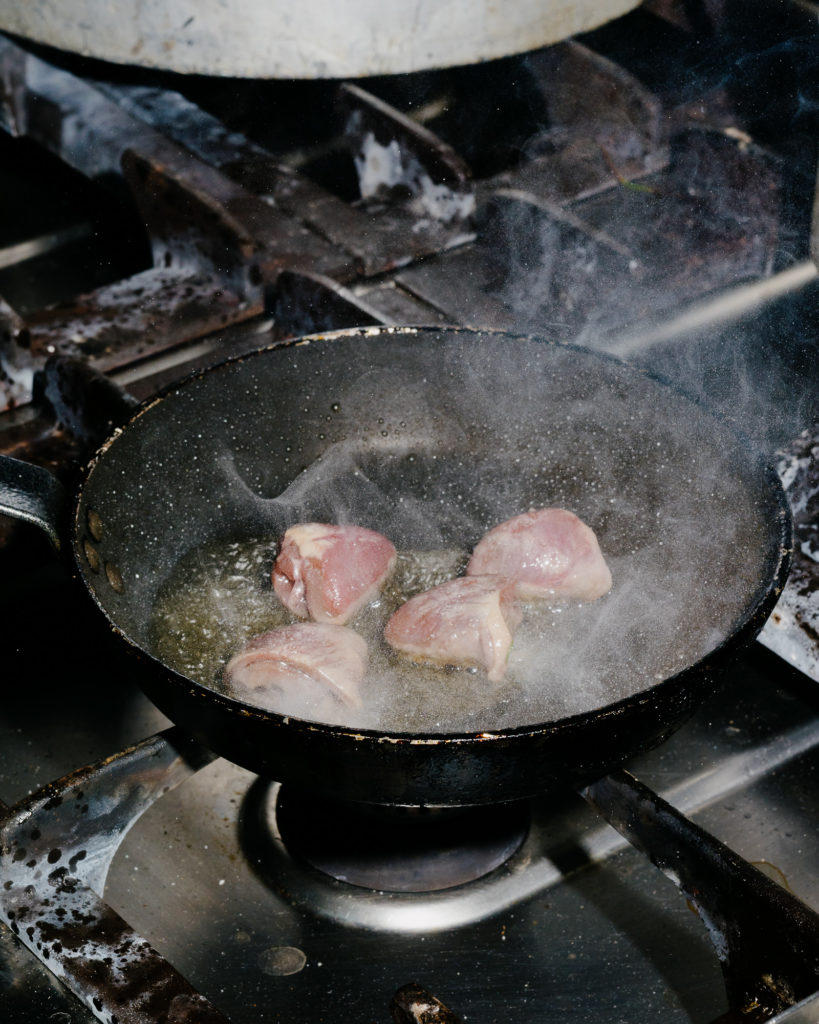

It’s a beautifully complex dish that tastes both earthy and rich. There’s a sweet and meaty element to it, which comes from the slight gaminess of the duck combined with the sweetness of the onion, which is reminiscent of the iconic pork and apple combination. The seasonality of this dish’s ingredients makes Barry think of Winter. The complexity of it appeals to him too, “it looks simple but it takes a fair few days to get ready” alongside the ingredients “it’s very unique as well you wouldn’t think to use duck hearts with toast and to put all the processes together”.

Glazed Carrot, Travis Radicchio, Tangelo, and Smoked Yoghurt

This dish demonstrates Sun’s mastery of simple ingredients. The humble carrot is the basis for this salad, except you aren’t dealing with an average bunch of roots but yellow and blue organic heirloom varieties. These root vegetables are separated according to colour grades and steamed with spices for 25 minutes. They become reunited in the oven, where they are cooked together for 15 minutes, this step Sun tells us makes them “juicy and chewy”. After cooling down from the oven, the carrots are then glazed with a cab sav vinegar and cacao fruit reduction. The glaze leaves each carrot slicked black on the outside, and when the time for slicing comes, gloves are required as Sun admits “they get pretty messy”.
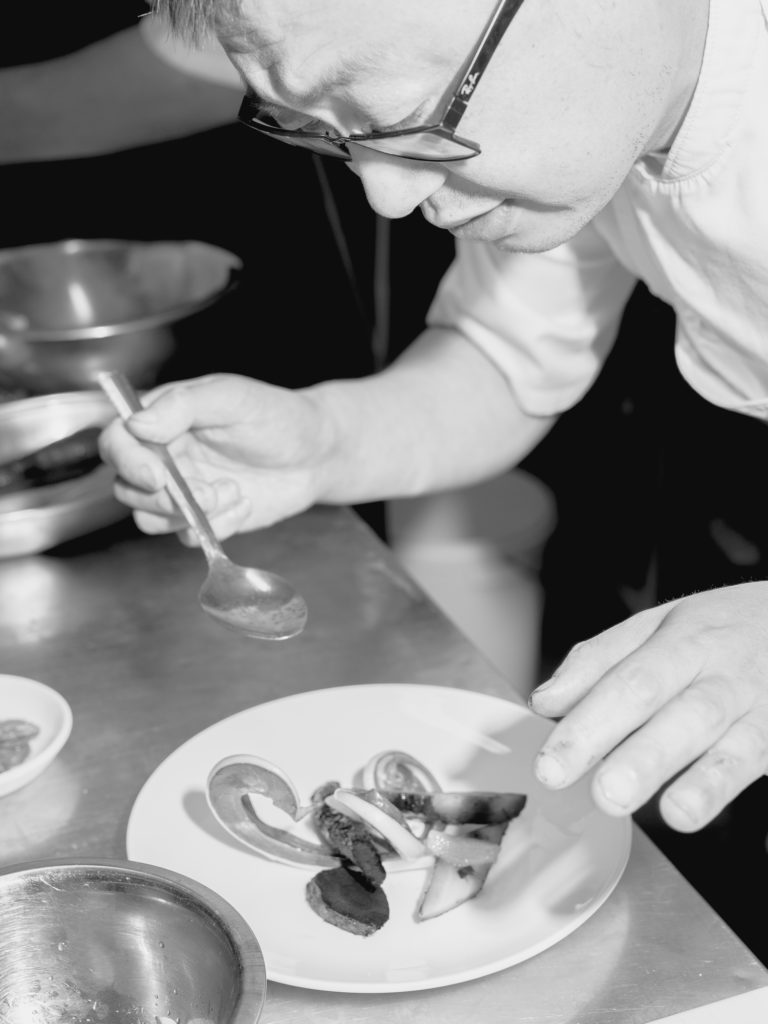
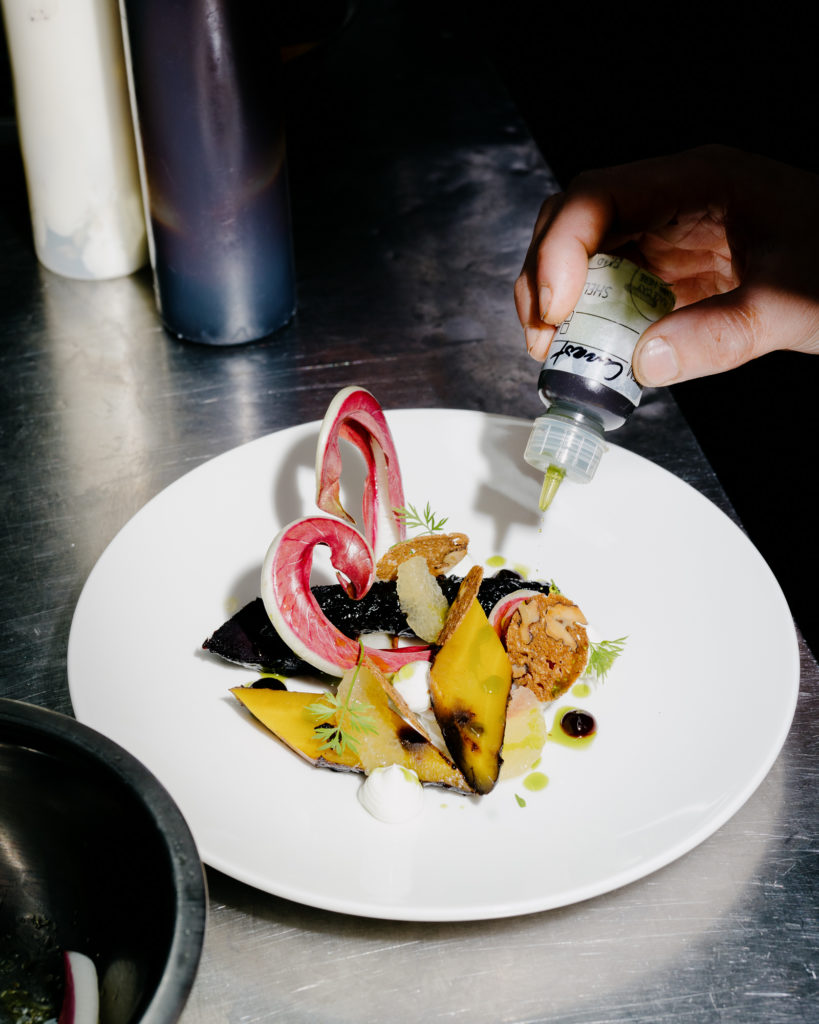
Once the carrots are ready the rest of the work comes from plating up, arranging the sculptural ends of the treviso radicchio against the blackened horizontally cut carrots, which are all interspersed by the slivers of tangelo. Little circles of wholemeal bread made with chopped fennel and coriander seeds are added for crunch. Some blobs of smoked sheep’s yoghurt, a dab or two of cab sav vinegar reduction before the whole thing is dropped with the radioactive green carrot top oil, that swirls around the plate tinging everything with a green hue. The whole plating is playful, artistic and sculptural, it’s put together with a deft hand and you can tell that Sun gets a kick out of each time he plates it, looping the tendrils of the Italian chard and resting the discs against the blackened exterior of the carrots.
Sun is pretty excited by this dish, telling us “it’s something that looks so simple, it’s carrots right? But there’s a lot of behind the scenes work involved in it”. Part of this enthusiasm no doubt comes from the response it has gotten from his dining room, he told us “people love it, which surprised me actually” he added, “it’s a very different dish, and the people that like it aren’t vegetarian which is especially nice”. The combination of a root vegetable, paired with the bitterness of the Italian chard and the gentle acidity of the tangelo reminds him of winter, he told us he gets the “feeling of the lead into Christmas from this dish”.

Sorrento Lemon Cream, Blackberries, Gingerbread Biscuits and Grappa

The dessert begins as it means to go on, with lemon, an unwaxed one that’s been imported directly from Sorrento, Italy. The thick rind is peeled and placed in some cream, before being left to infuse for a couple of hours. This infusion is mixed with some lemon juice and a little bit of sugar and made into a posset. It’s kept in the fridge until just before serving, where it is given a little warm-up with a blowtorch “to take the chill off” as Sun puts it.
It’s paired with a disc of gingerbread biscuit, fresh blackberries, a blackberry sorbet that’s been topped with a couple of drops of blackberry oil. A Grappa foam is administered then, the brandy has been infused with lemongrass and a star anise syrup before entering the can.
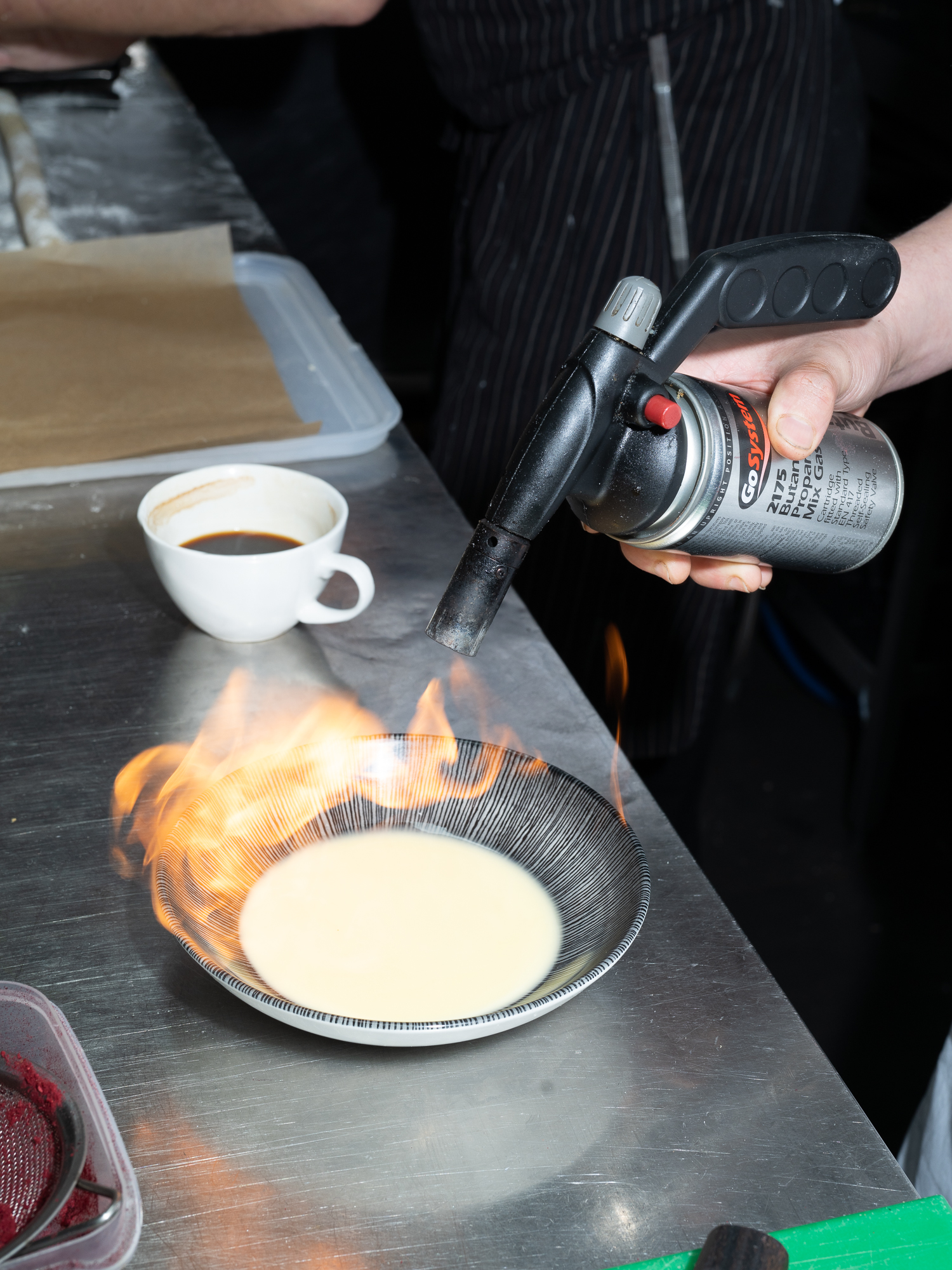
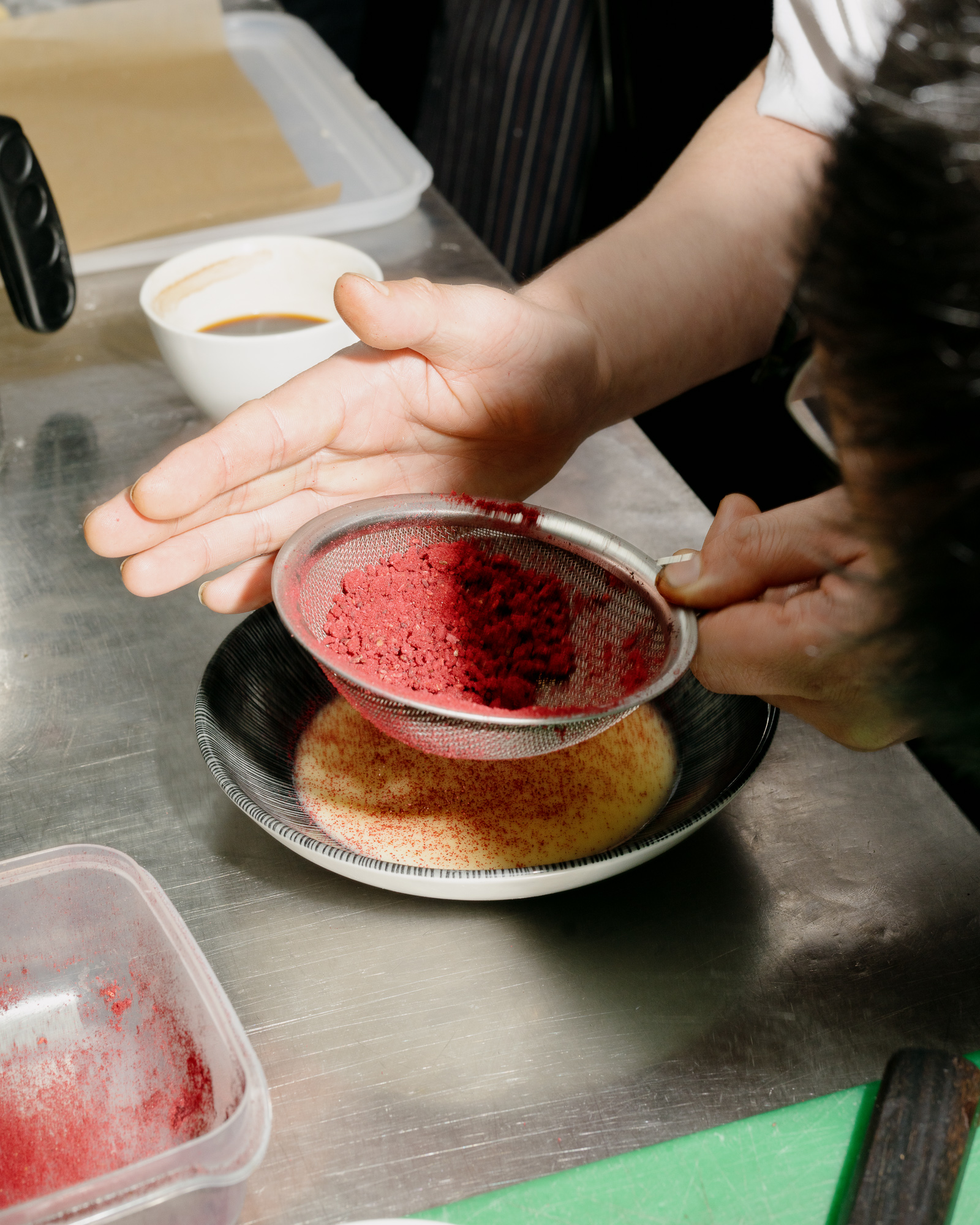
This dish centres around two key tastes, lemon and blackberries. It’s got the intersection of seasons in one, the summery fresh lemon, the rich autumnal taste of blackberries, with the Christmassy taste of gingerbread. The acidity mixed with the sweetness, alongside the crunch of the disc and the smooth of the posset and sorbet. You can taste the Grappa in the background, with a hint of blackcurrant to the drink it complements the fruity elements of the dish well. For Sun “it’s my favourite dessert, it’s everybody’s favourite dessert”.

You can find Volpe Nera in Blackrock’s 22 Newtown Park, for more information visit their website.
Elsewhere on District: The Ultimate Dublin Food Guide to Dublin’s Best Pasta


